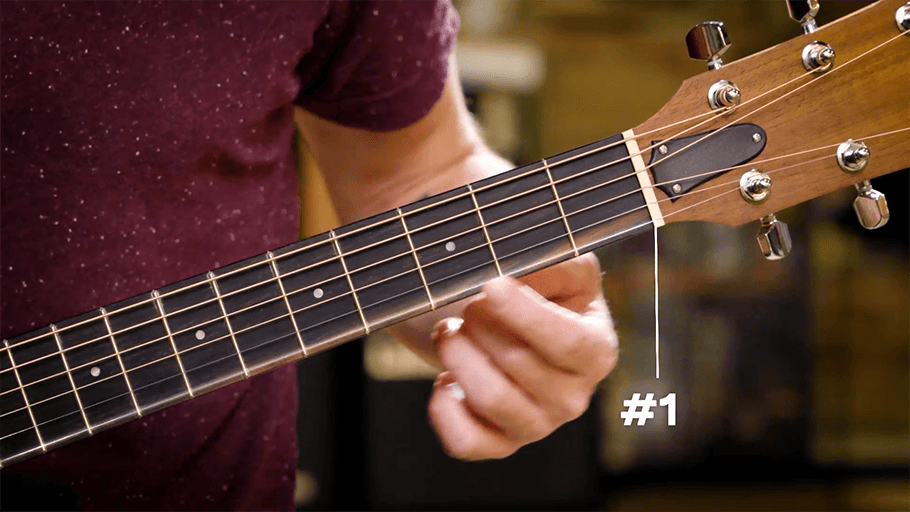
Start with String 1 (thinnest string). Pluck it and watch the tuner respond. Aim for the middle line, which indicates perfect tuning.
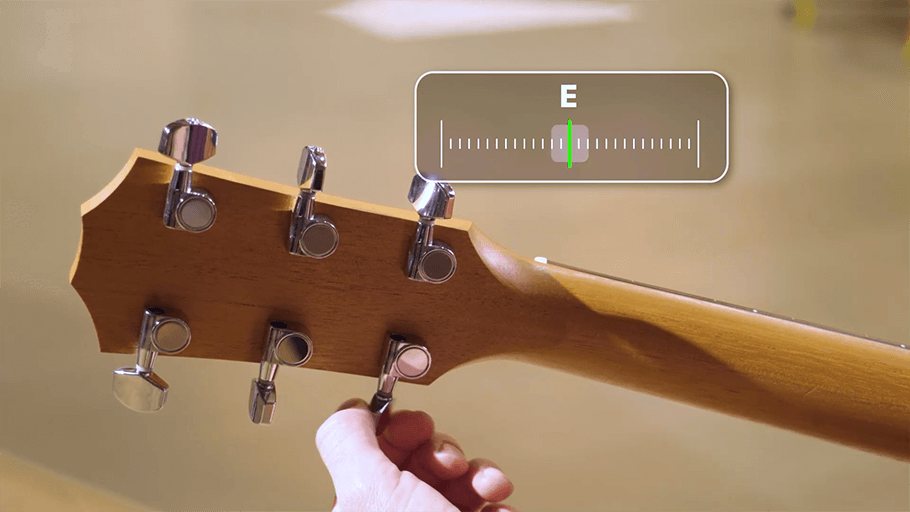
If the pitch is too low, turn the tuning peg away from you; if it’s too high, turn it toward you. Repeat until the tuner shows the middle line and you hear the success sound.
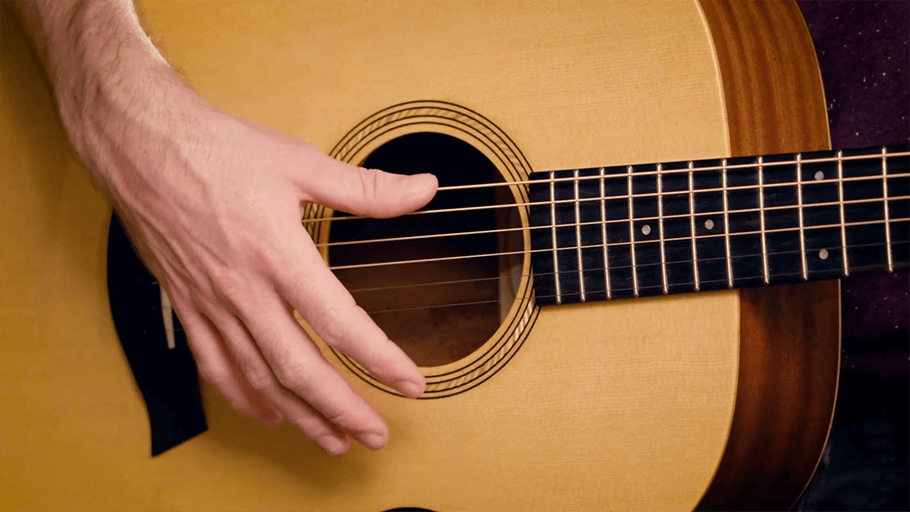
Move through each string (1 to 6), tuning them in order. Recheck all strings after tuning, as adjustments may affect others.
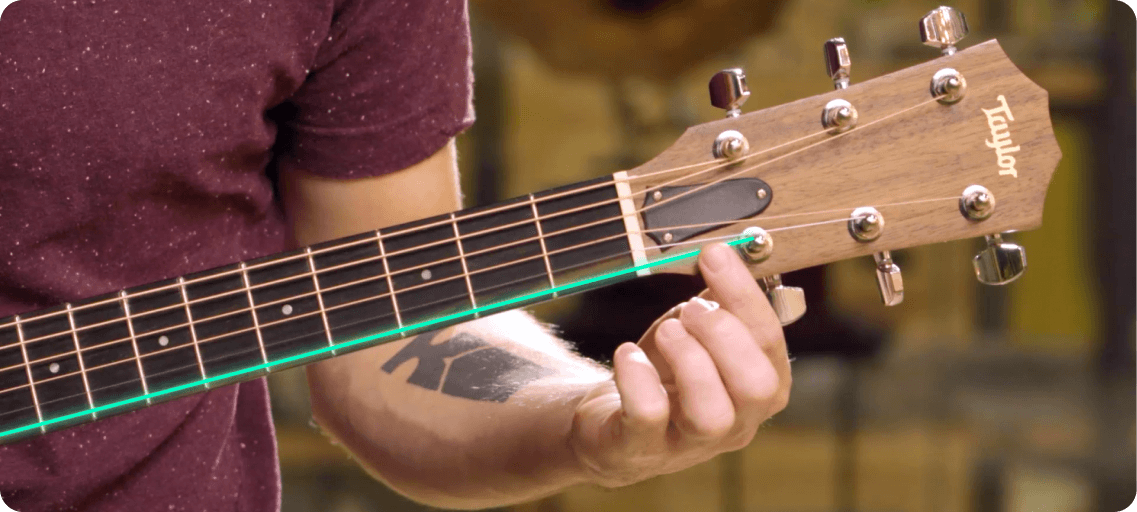
Follow the string to its tuning peg to ensure you’re turning the correct one.
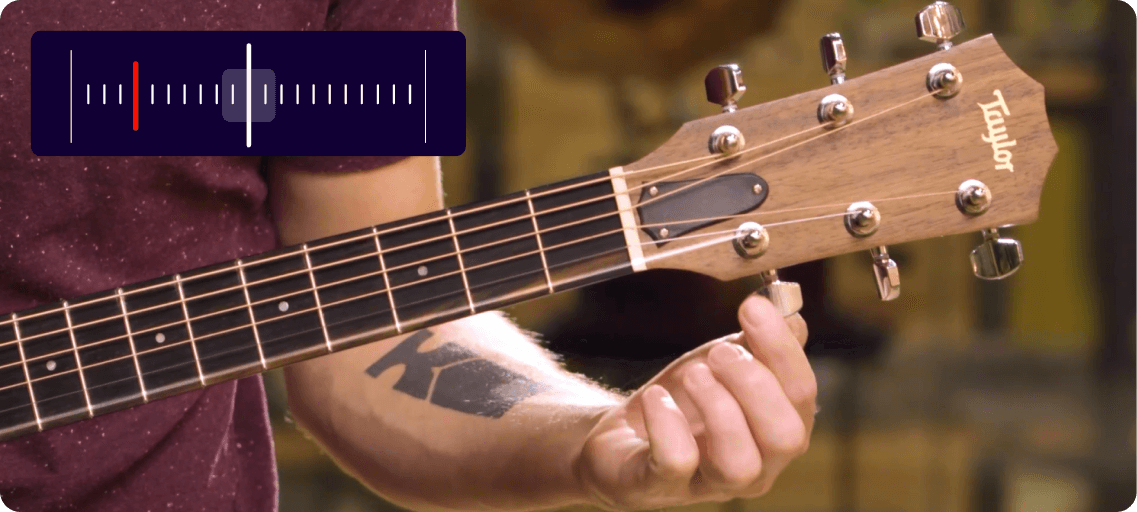
If turning the peg doesn't change the tuner reading, double-check you’re adjusting the right peg. Turning the wrong one may cause a string to snap.

Standard tuning (EADGBE) is the most common guitar tuning, used for nearly every song, solo, or riff. The strings align to these notes:

Guitar strings naturally shift pitch due to temperature, humidity, and use. Regular tuning ensures the best sound. If your guitar frequently goes out of tune, consider a professional check-up to ensure it's properly set up.